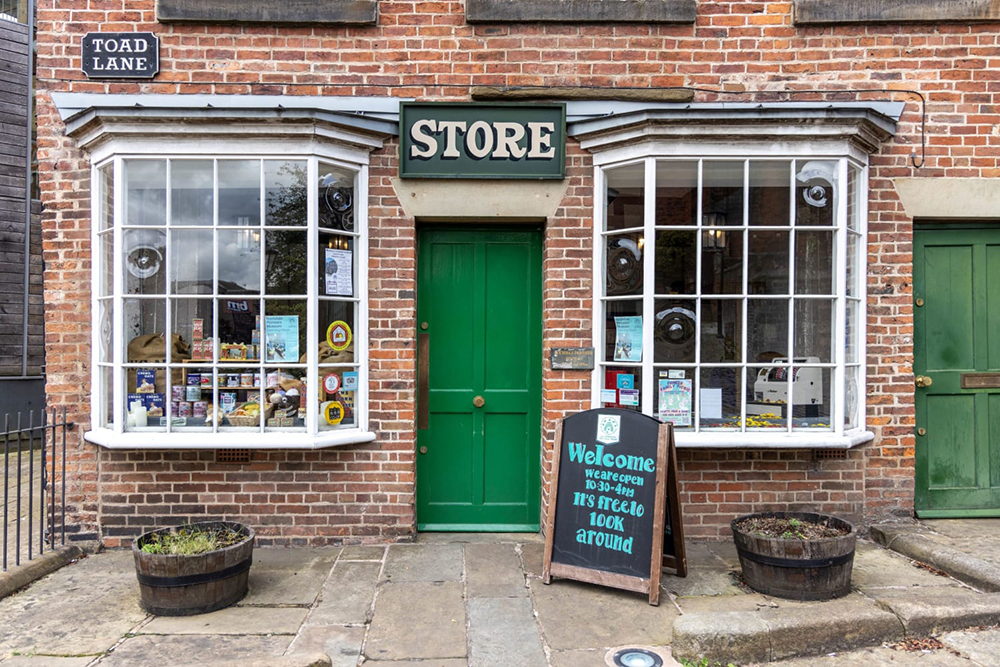
When I ask people to name a few co-ops they are familiar with, they may mention their local food co-op, or a well-known farmer owned brand, or perhaps a worker co-op active in their area. Surprisingly, they often overlook their local credit union, despite the fact that more than 1 in 3 Americans are members of these community-based co-ops.
In basic terms, a credit union is a not-for-profit financial cooperative formed by a group of people (some also have business members) who have pooled their own resources to provide one another with savings and checking accounts, loans and other services. Like other co-ops, credit unions are designed to meet member needs, as opposed to maximizing profit, and members see benefits in local ownership, higher return on savings and lower fees.
When you open an account at a credit union, you become a member and have a vote in electing a board of directors which then oversees management. In order to become a member, you must qualify for the credit union’s “field of membership,” which may be your geographic location or employer, place of worship, or other organizational affiliation such as membership in your local food co-op. With over 110 million members in the U.S., credit unions play a significant role in our economy. And since the Great Recession of 2008, credit unions have garnered renewed attention due to their stability and resilience during the banking crisis.
The modern credit union movement began in Germany in the mid-1800s in response to dramatic economic change. Franz Hermann Schulze-Delitzsch is credited with organizing the first successful credit unions, focused on serving urban communities with limited access to affordable loans. Around the same time, Friedrich Wilhelm Raiffeisen was experimenting with a similar self-help approach to meeting the financial needs of family farmers. The basic member-owned business models created by these pioneers then spread rapidly across Europe and around the world. Today there are an estimated 68,000 credit unions in 109 countries.
Alphonse Dejardins is credited with establishing the first credit union in North America, known as a caisse-populaire, or “people’s bank,” in Québec in 1901. Soon after, a personal visit by Dejardins helped launch the Caisse Populaire Ste Marie, now known as St. Mary’s Bank, by French-speaking immigrants in Manchester, New Hampshire, in 1908. The businessman and philanthropist Edward Filene and attorney Roy Bergengren played critical roles in credit union development through the establishment of the Credit Union National Extension Bureau (CUNEB), which laid the foundation for the Credit Union National Association (CUNA), the Federal Credit Union Act, and the National Credit Union Administration (NCUA), which regulates credit unions.
While there are many historic names associated with the credit union movement, the drivers of its early growth were countless, often anonymous organizers and volunteers. Most began modestly among a small group of people, and while the model has been used by people from all walks of life, it has been a particularly effective tool for economic empowerment among working people, immigrants, labor unions and communities of color. These “co-opreneurs” were often working people whose goal was not individual gain, but collective financial security and well-being.
For example, in 1938 a small group of teachers in Manchester, CT, organized the Manchester Teachers Federal Credit Union, known today as the Northeast Family Federal Credit Union. At that time, the primary concern was providing one another with small loans to tide members over to the next paycheck. Today, the credit union has over 6,000 members and offers a full range of financial services to members in their field of membership, which includes members of nearby Willimantic Food Co-op.
“As cooperative businesses, the credit union and the food co-op are rooted in and owned by the local community,” says Northeast Family FCU CEO Joanne Todd. “What’s exciting to me is that we are able to show what’s possible when we work together to serve our community even better.” In addition to her work at Northeast Family FCU, Todd serves on the Board of Directors of Willimantic Food Co-op.
While credit unions come in all sizes, some have also grown substantially in response to the needs of their communities. Greylock Federal Credit Union in Pittsfield, MA, for example, was founded in 1935 by just fifteen G.E. employees as the “Pittsfield G.E. Employees Credit Union.” For twenty years, the business was operated by volunteers before paid staff was finally hired. Through a series of mergers with other local credit unions, Greylock continued to grow dramatically. At the same time, the situation in the region has also changed as major employers such as G.E. left the area. As the credit union began to expand its vision for its role in the community, a regional charter was approved in 1994 enabling anyone living in Berkshire County to become a member.
“Berkshire County has an average household income of under $50,000 and 20 percent of our families with children under five are living in poverty,” says Senior Vice President Jodi Rathbun-Briggs.“Recognizing these challenges, it has become important for us to expand our community initiatives including financial literacy and counseling, and special loan programs.” As part of this effort, the credit union has become a U.S. Treasury certified Community Development Financial Institution(CDFI).
Today, Greylock Credit Union is one of the larger credit unions in the U.S. Northeast, with over 82,000 members and $1 billion in assets. “Our vision is to enable our community to thrive,” Rathbun-Briggs says. “And to make this vision a reality, we have to look beyond traditional services in order to meet people where they truly need us.”
While unique in their own ways, Greylock and Northeast Family credit unions’ stories are illustrative of the role that credit unions have played in communities across the country. And key to their success has been collaboration among credit unions in establishing regional and national associations and leagues to enable them to pool resources for education, advocacy and development. This 6th Principle of the co-operative business model, co-operation among co-operatives, recognizes that co-ops “serve their members most effectively and strengthen the co-operative movement by working together through local, national, regional and international structures.”
One example is the Association of Vermont Credit Unions (AVCU), based in Colchester, VT. “Our association is first and foremost an advocate for its member credit unions and their individual members throughout Vermont,” says President Joe Bergeron. “Almost 60 percent of Vermonters are members of one or more credit unions, and it’s our cooperative structure that attracts consumers and makes them life-long believers in the cooperative way of doing business.”
A central aspect of AVCU’s work is communicating the positive impact of credit unions for Vermonters. For example, Vermont credit unions employ about 1,100 people which, combined with another 1,173 ancillary jobs, equates to over $123 million in labor income. In addition, credit unions provide about $500 million in total economic impact in the state, over $27 million of which is better rates and fees to members, including $16 million in better loan rates, $4 million in better savings rates, and $7 million in lower fees.
But this is just the beginning of the credit union story, says Carla Decker, President and CEO of DC Credit Union. “Beyond addressing barriers to economic inclusion, credit unions are increasingly concerned with climate change, renewable energy and investing in the local economy,” Decker says. As a member of the Board of Directors of NCBA CLUSA and U.S. delegate to the Board of Co-operatives of the Americas, a regional body of the International Co-operative Alliance, Decker recognizes that this is no small challenge. “Addressing these broader issues will require credit unions and other cooperative businesses to work closely together with the public and private sectors.”
Today, October 18, credit unions and their members around the world are celebrating the 70th Annual International Credit Union Day. Overseen by the World Council of Credit Unions and coordinated nationally by the Credit Union National Association (CUNA), the Credit Union Day is an opportunity to take a fresh look at your local credit union and its role in your community (to find a credit union near you, visit asmarterchoice.org). And as NCBA CLUSA invites the national cooperative community to celebrate Co-op Month in October, with the theme “Co-ops See the Future,” the stories of the history and impact of our credit unions may also serve as inspiration as we consider how the cooperative business model can continue to serve and empower people as we work to build a more inclusive economy for everyone.
—Erbin Crowell is Executive Director of the Neighboring Food Co-op Association and serves on the Board of Directors of NCBA CLUSA. He received his Master of Management: Co-operatives & Credit Unions from Saint Mary’s University in Nova Scotia and is an adjunct lecturer at UMass Amherst where he teaches courses on the cooperative movement. Contact him at erbin@nfca.coop.


